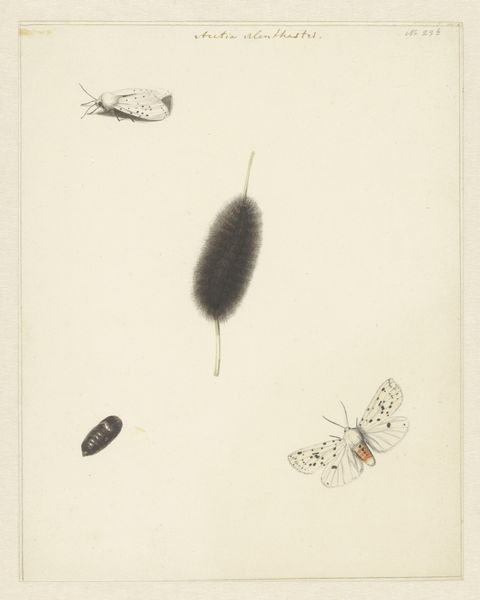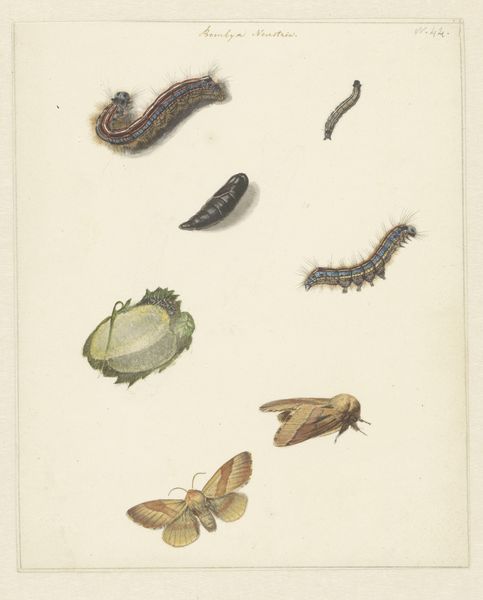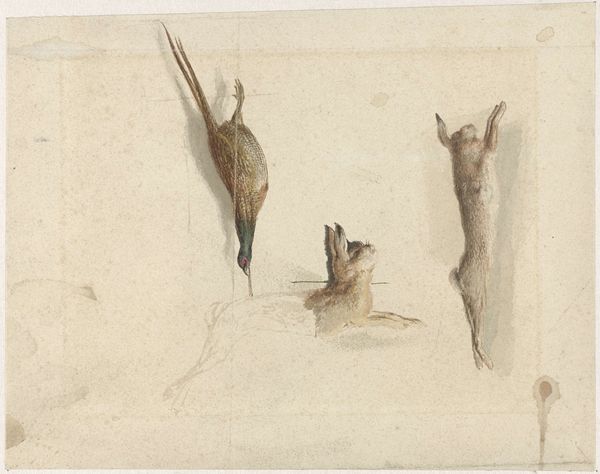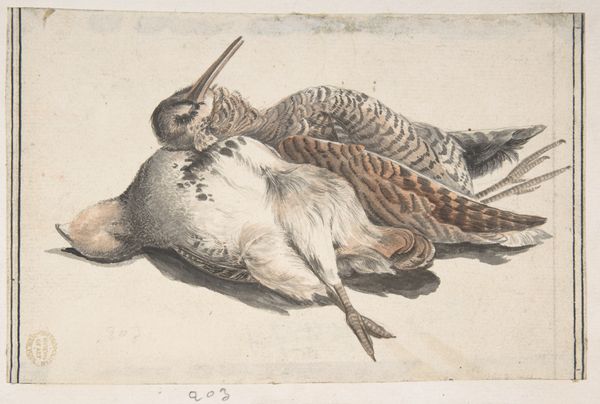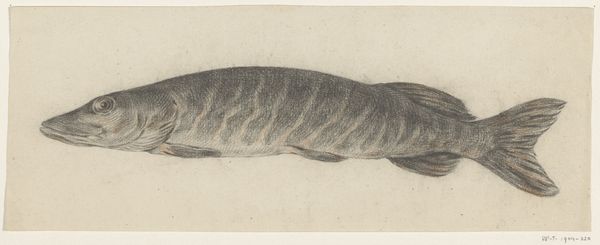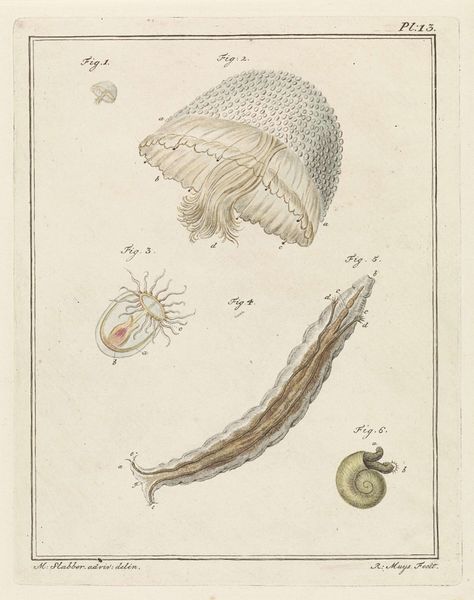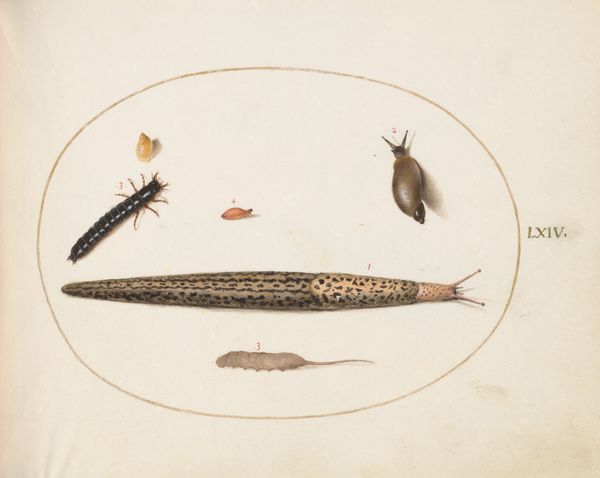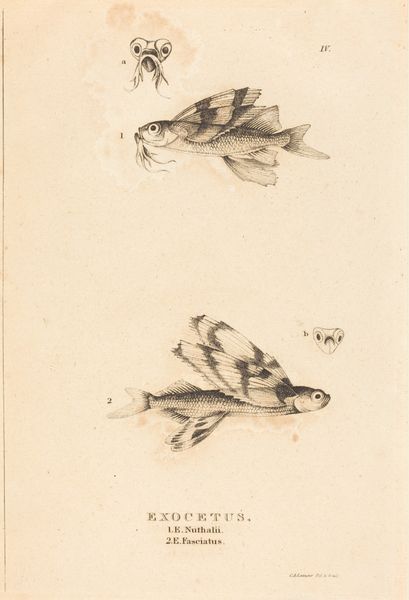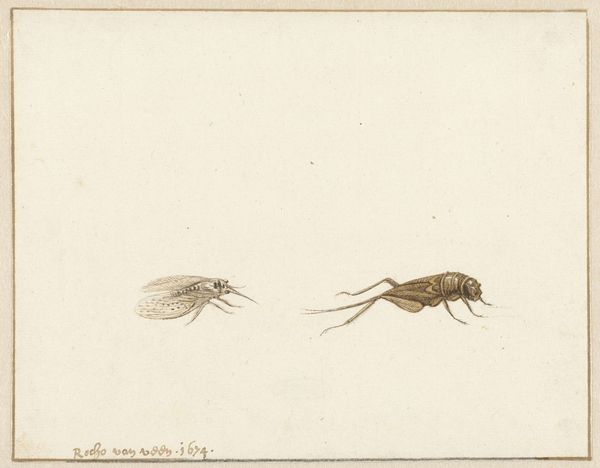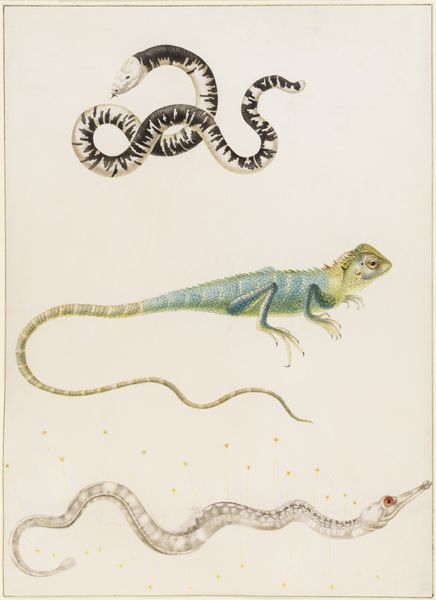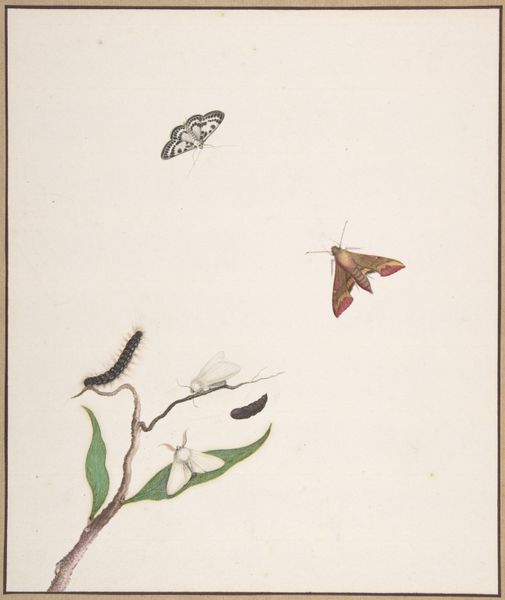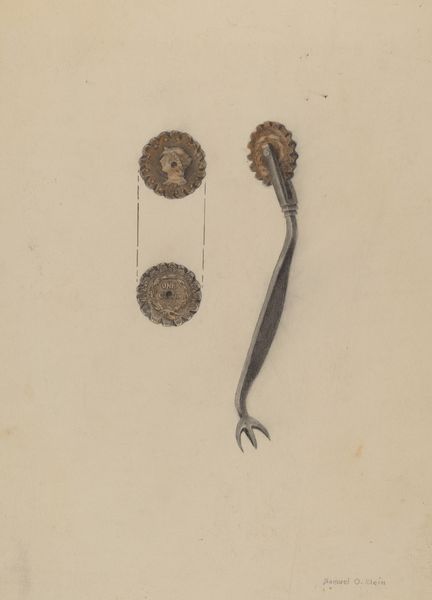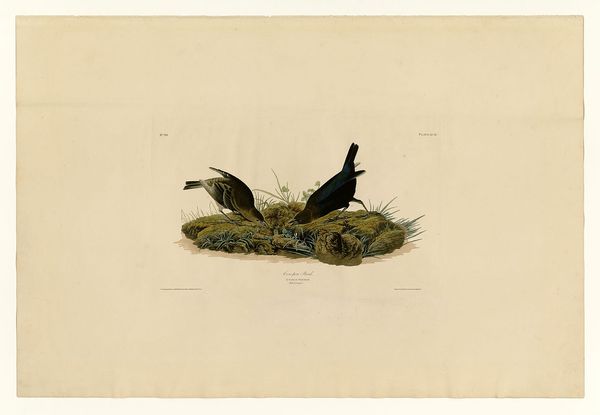
drawing, coloured-pencil, paper
#
drawing
#
toned paper
#
light pencil work
#
coloured-pencil
#
pencil sketch
#
curved letter used
#
paper
#
coloured pencil
#
botanical drawing
#
watercolour bleed
#
watercolour illustration
#
naturalism
#
botanical art
#
watercolor
Dimensions: height 199 mm, width 165 mm
Copyright: Rijks Museum: Open Domain
Curator: Here we have "Studieblad met rups en nachtvlinders, Lasiocampa Quireifolia," or "Study Sheet with Caterpillar and Moths, Lasiocampa Quireifolia" by Albertus Steenbergen, made sometime between 1824 and 1900. It is a drawing executed in coloured pencil on paper. Editor: My first impression is of meticulous detail—but strangely devoid of life. It feels like a specimen sheet more than a celebration of nature. The scale is also peculiar, as they are centered and not scaled proportionally to nature. Curator: Indeed, its structure embodies a taxonomic approach. The artist’s rendering presents a flattened perspective, inviting analytical viewing rather than evoking a sense of naturalism. The delicate hatching and use of negative space are deployed with intention, and the paper becomes integral. Note also the scientific, hand-written label in the top left. Editor: But isn’t that removal of life the very process of creating such a rendering? Steenbergen's use of colored pencil simulates the softness and texture of the caterpillar and moth, yet this requires a great deal of processing and labor. This illustration embodies the intersection of artistic skill, material transformation, and scientific observation—the consumption of nature via the colored pencil. Curator: The formal arrangement directs the eye, inviting contemplation. There’s a semiotic tension—the moth is an established symbol of transformation and mystery, poised alongside its larval stage. Note also how Steenbergen utilizes a warm, toned paper, grounding the image in a historical material context, as well as giving a base from which colors resonate with greater depth. Editor: And what about that paper, sourced, treated, manufactured, for the specific purpose of rendering nature as specimen? Consider the social implications inherent in a naturalist depiction created for purposes of colonial exploration, trade, or amateur science. How many caterpillars were sacrificed in order to create something seemingly innocent and beautiful? Curator: These considerations are valid but should not overshadow Steenbergen’s control of line, his exquisite rendering of form, the subtle gradations of color. His aesthetic choices transform mere observation into an object of compelling visual interest and philosophical tension. Editor: Perhaps, but recognizing these aesthetic achievements alongside an understanding of the artwork's production makes this all the more impactful. Seeing these things as products of a labor helps one interpret them fully. Curator: An insightful contribution, Editor. This piece encourages close observation on multiple levels. Editor: Yes, and ideally prompts viewers to consider both its artistry and its tangible history.
Comments
No comments
Be the first to comment and join the conversation on the ultimate creative platform.
